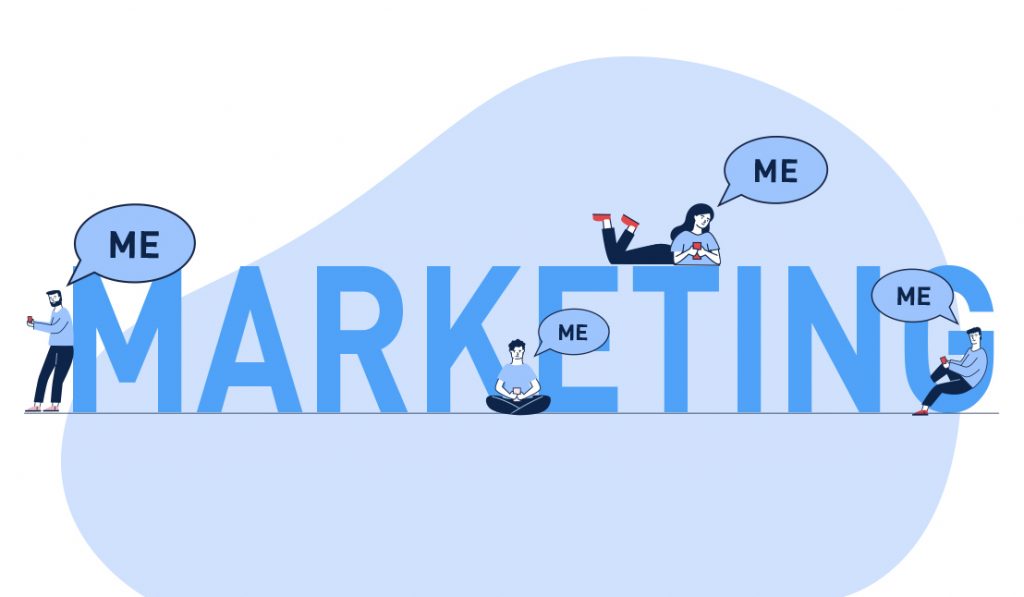 Human to Human
Human to Human
What does personalisation in marketing entail?
When someone you like recommends a film, series, or song to you, you normally look it up straight after. Normally, you’ll be pleased to find out that you like that series or song too.
This means that if that same person gives you another recommendation, you’ll probably accept it, no questions asked.
Well, brands learned this and how to do it, without you even realising it.

The Marketing of personalisation: where everybody matters
Personalisation, in short, are all actions focused on offering each client products and services that they may like and be interested in. That’s to say, we’re focusing on the customer and not the product. It’s a strategy where it’s the who not the what that matters.
The average consumer, before deciding to buy something, will go through 5 stages of contact. Each one of us are people with different tastes, thoughts, preferences, and personalities. So, it’s only logical that these stages are different from one person to another, and this is where the need for personalisation comes in.
Each customer’s purchasing process is unique.
We live in a time where thinking of new, impactful strategies for a general public is no longer enough. You need to talk with each person, appealing to their tastes and their situation.
The era of ‘One-to-one’
We’re all special, but it’s not enough to just know that, we need to be reminded and we need to feel that we’re worth it. Thanks to personalisation, each consumer can feel listened to, and brands have the opportunity and the duty to fulfil their desires and dreams.
To roll out a personalisation marketing strategy, you need to go through 4 phases:
- Identify who each customer is, GATHER as much data as possible on their tastes, preferences, habits, sites they visit and what they like to do in their free time. This way, you’ll know what route to take and conversion is almost a guarantee, like when we receive an email with products that interest us or that we’ve looked for recently.
- Once that information is in hand, you need to know what to do with it to SEGMENT your clients in the most effective way. We can start thinking about where the person lives, where they go in their free time, what places they visit etc.
- We should identify the right CHANNELS that each person likes to be contacted through. On instagram, we can show a winter clothing catalogue and through email, we can send similar styles of what the customer liked. The ideal here is that in each channel there is a cohesive, uniform strategy.
- Finally, you need to PERSONALISE what you want to sell. We can show the client banners of what interests them, select photos or videos that will get their attention and we tailor the products that we present.

Top strategies for a personalisation campaign
While the quest for marketing to create individual experiences is relatively new, there are already a number of strategies where the concept of personalisation is at the core.
Some examples of uses for personalisation are:
- Programmatic marketing: where technology and advertising come together. This is where we bring together all the information we can on a customer and then acting on it. Have you ever been interested on puppies online and next see an advert for pets? Now you know why.
- Redirection: here, cookies are your best friend. Every time a consumer visits our website, we use them to track the route they take, both on our site and on others, so that we can present them with advertisements for products they have already seen, sound familiar?
- Proximity marketing: the parts at play here are mobile devices and geographical location. Sometimes you may be in the car, you are running out of gas, and you see in your browser an advertisement for the nearest gas station. Or maybe you are in a square and you see coupons valid only for that day in a shop that is located there, all this is due to proximity marketing.
- Personalised websites: these websites use optimisation systems with the aim of offering dynamic content in line with each visitor. This depends on whether it’s their first time visiting the site, or if they visit regularly or even on their IP address. For example, when you click a link to a foreign webpage, you are immediately redirected to the webpage of your country and the content in your language.
- Recommendation engine: this is one of the most popular strategies due to the platforms it’s used on. Have you seen a YouTube video and on the play next list is one that is very similar? After finishing a series, do you get recommended ones in the same genre? Did you shop online and now you’re being recommended products from the same seller or category? That’s how recommendation engines work.
The era of you, me, her and him
There are probably campaigns that cannot be completely personalised at each stage. But it’s important to try and make contact directly with the customer.
Salesforce reports that for the next year, more than half of consumers can expect brans to anticipate their needs and recommend them something to buy instead of looking themselves. This is what living in the age of streaming does.
For this reason, it’s absolutely essential for brands to know about personalisation and learn to use it as their biggest ally.


